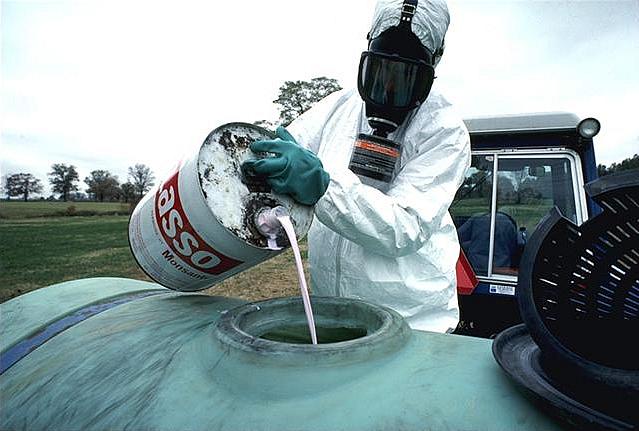A mother’s anguish drives podcast series on toxic pesticide
In 1989, a fetus develops with a neural tube defect and a serious malformation of the brain.
In 1992, a child born with his esophagus connected to his trachea instead of his stomach and a host of other birth defects is slow to reach developmental milestones and is eventually diagnosed with two brain malformations at age 15.
In 1993, a third child is born without complications or developmental delays, only to be diagnosed with an inoperable brain malformation at age 19.
Three children belonging to the same set of parents, with a combined total of four brain malformations that doctors say are unrelated. “The doctors are wrong,” says the mother, with the certainty born of maternal instinct. However, it’s not until March 2017 when she hears an NPR story about the Trump administration lifting a ban on the pesticide chlorpyrifos that she will have evidence on which to pin her hopes and form a hypothesis that her children’s brain malformations are somehow related.
The reason I know all this is because the mother is me.
Chlorpyrifos is an organophosphorus insecticide that belongs to a class of chemicals developed as a nerve gas by Nazi Germany. Human and animal studies show that it causes structural damage to the brain. It has also been linked to heart disease, lung cancer, Parkinson’s disease and the lowering of sperm counts. And according to the 2017 NPR story, chlorpyrifos was, until 2001, an active ingredient in over-the-counter flea bombs and pet flea and tick collars.
This is all the information I need to pursue my hypothesis further. That’s because the one thing I do remember about my first pregnancy is that days before I learned I was pregnant, my husband and I set off two flea bombs in our home. Twenty weeks later, a routine ultrasound detected the fetus’ neural tube defect and tiny brain, a fraction of the size it should have been.
Through research, I’ve discovered that in addition to being exposed to chlorpyrifos while pregnant, I also harbor what is known as a body burden caused by a gene mutation. In layman’s terms, my body lacks certain enzymes that are known to play a critical role in the body’s ability to detox after exposure to harmful chemical. When exposed to a chemical contaminant, an individual with a body burden stores toxins in his or her fat. For instance, dioxin — a byproduct of the chlorpyrifos production process and one of the most potent and poisonous contaminants (it’s in Agent Orange) — has been detected in body fat and seminal fluid 30 to 40 years after a person’s exposure to it.
Some health professionals recommend individuals with my genotype minimize their exposure to pesticides and heavy metals. Had I known this 30 years ago, and had there been a warning label on the flea bombs, I likely would have made more informed choices.
In 2001, the Environmental Protection Agency banned the indoor use of chlorpyrifos. Today, however, it is still sprayed on crops, despite reams of evidence, in the form of incident reports, that the chemical sickens farmworkers exposed to it and contaminates drinking water supplies in farming communities.
The reporting goal of my 2019 California Fellowship project is to produce a podcast series that will illuminate the risks of chlorpyrifos exposure to migrant and seasonal farm workers, in particular to mothers and women of childbearing age.
The series will explore the history and politics of chlorpyrifos answering practical and ethical questions raised by genetics, science, capitalism and politics. The nut question of the series is, How and why are the most marginalized groups in society the most affected (and expendable) when it comes to toxic substances?
Each episode will be approximately 30 minutes in length and will detail the environmental realities that impact migrant farmworkers in their own voices. Interviews with public health experts, environmentalists and industry whitsleblowers will explain why the government’s response to the dangers presented by chlorpyrifos have been slow and tepid, and why, despite the state of California’s temporary ban on chlorpyrifos, it is still showing up on produce being sold in grocery stores.
In the end, I hope that my series will stoke a public outcry that will ultimately result in a permanent and enforceable ban on chlorpyrifos use throughout the state. My own personal goal is for no other individual to experience the heartbreak or medical challenges my children and I have endured.


